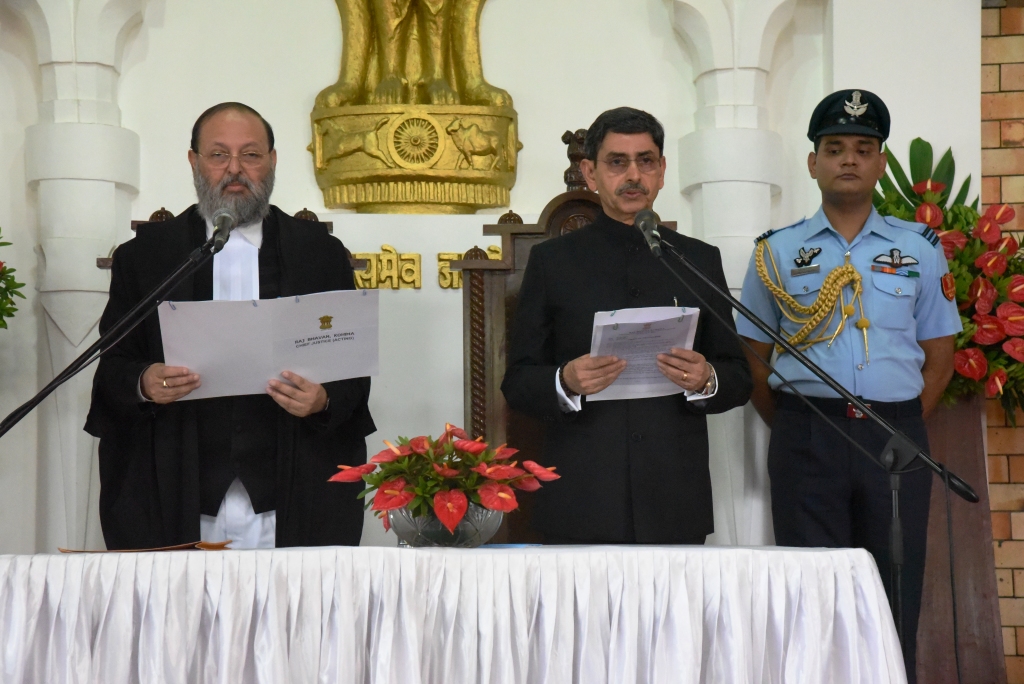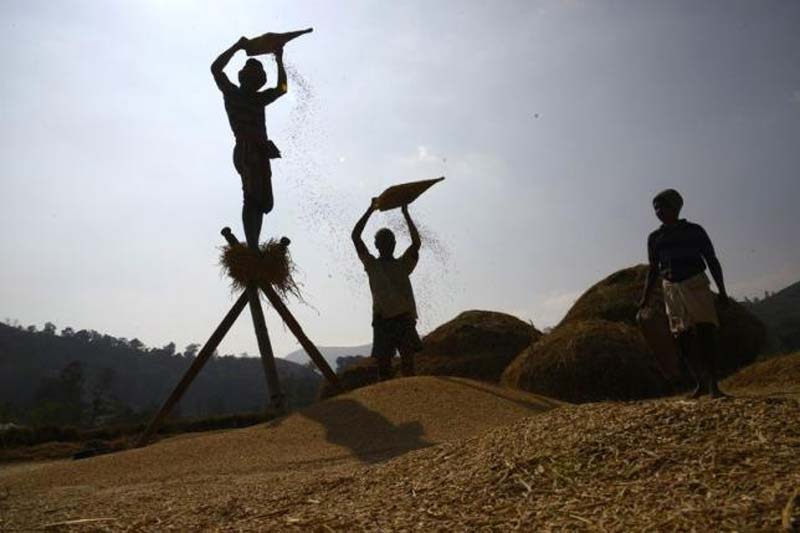The present govt should explore the idea of constituting a Task Force on Nagaland’s infrastructure to be headed by a senior most bureaucrat and to include the top technocrats of all the infrastructure related departments. This task force (without political interference) will undertake a thorough study of the state of infrastructure in Nagaland and will be empowered to recommend and draw up a concrete plan of action.
Collapsing Development—whom to blame… bad weather, bad roads or bad governance?
Naga Republic View
The monsoon season is now well underway here in Nagaland. As important as it is for the farmers, monsoon is also a good time for the government, contractors, engineers and public to measure the quality of our development whether it is our roads, bridges, drainage and other public utility services.
In fact, the best time to assess where all our public funds are going is during the monsoon season. A drive through the picturesque State of Nagaland during this time of heavy downpour will actually make us question why our roads and other public utilities cannot survive two-three days of continuous rain.
This is the right time to speak about ‘quality control’, which is a popular theme among politicians and the technocrats in seminars and conferences, here in Nagaland.
In fact it was in 2012 (6 years ago) that the previous government under Chief Minister Neiphiu Rio had instituted a fully fledged office of the Quality Control Board (QCB) consisting of three members. To recall, the QCB was empowered to order an enquiry or investigation on any construction project or on materials supplied, on which complain had been submitted either from any governmental agency or from members of the public.
Interestingly the QCB was also empowered to “advice the Government on any restructuring of the administrative systems”… that will lead to “greater degree of transparency and accountability that are necessary for better implementation of projects and for the maintenance of quality in the works that are undertaken”.
Then there was also the provision for setting up of Quality Control Committee in each Department and also District Quality Control Committee Levels to check, verify and inspect supplied materials and also construction works.
So what happened to this Quality Control Board whose members were paid from the State exchequer? Did they fulfill the duties assigned to them to check corruption in development works? Is the Quality Control Board still functioning? Perhaps the government of the day should bring out a public report on the working of the QCB for the past 5-6 years and whether it has fulfilled its objective.
Over the past few decades, the poor quality of our development work has become a matter of concern for all of us—high cost involved, stalled projects or substandard and poor quality. In fact our Chief Minister has been profusely speaking about quality control and the need for engineers and contractors to improve the quality of construction works.
And with the onset of the rainy season, it is to be expected that our roads and highways will be severely tested by elements beyond our control. Heavy rains and landslide are therefore not to be unexpected in a hilly state like Nagaland. Also we have the problem of floods especially in the plain areas of the State. Given these physical characteristics of our land, it should be obvious that our roads, bridges and other infrastructure should be build accordingly.
With good engineering design and proper utilization of funds there is therefore no reason why our roads, bridges and other public infrastructure should not be able to withstand even the severest test of nature. Nevertheless we do also acknowledge that even the best build roads or other construction can be damaged by natural disasters such as massive earthquake, floods or landslide.
Having stated these, it is a matter of concern that many of our roads build at huge cost are breaking down. All of us are aware of the chronic problem of landslide along NH-29 especially near Kohima. Every year we are faced with ‘bad roads’ in some portion of NH-29. This year too the situation does not look very good.
The big question is who is to be blamed for all this? Is it nature? Corruption? Could it be poor quality construction? Or could it be faulty engineering? The answer may probably lie in all of them. But to solely put the blame on nature would be misleading and wrong.
The present government led by Chief Minister Neiphiu Rio should initiate to undertake an objective assessment of what is wrong with our development process. For instance if the assessment finds that nature is to be blamed, the concerned engineering department/s will have to rework or improve on designs. Similarly if it is because of poor quality materials used and improper construction, then the government can also come out with strict guidelines to rectify them.
Along with such an exercise we need to overhaul the corrupt system of paying kickbacks and commissions. All these are added to the enormous costs of implementing a project. The result is that quality suffers a great deal.
Let’s be honest. For too long, those responsible for taking economic development to the grass roots—politicians, bureaucrats, contractors (and even the national workers) have gained at the expense of public welfare by way of siphoning off funds, incomplete projects and poor quality of implementation. As a result majority of our people continue to remain disconnected from the development process.
Within the first few months of coming to power, the Rio led PDA government has constituted an Investment & Development Authority of Nagaland (IDAN) with former Chief Secretary, Alemtemshi Jamir as the Chief Executive Officer (CEO). The idea of the IDAN is to work towards bringing in investment into Nagaland.
Against the backdrop of the collapsing development in Nagaland, top priority should be given instead to rebuild the State’s infrastructure like roads and electricity. Rather than having an investment authority (IDAN) we perhaps need much more, an Infrastructure Authority of Nagaland. Given the present state of our roads and power supply (infrastructure), no sensible investor will want to come. Instead of wasting time and resource on the IDAN, which at present is not a priority nor in the interest of public welfare, the PDA government should instead use the opportunity provided by the recent disaster to rebuild the infrastructure sector in Nagaland.
The present government should explore the idea of constituting a Task Force on Nagaland’s infrastructure to be headed by a senior most bureaucrat and to include the top technocrats of all the infrastructure related departments. This task force (without political interference) will undertake a thorough study of the state of infrastructure in Nagaland and will be empowered to recommend and draw up a concrete plan of action.
Based on the study of the task force, a project for infrastructure development can be submitted to the Central government for necessary funding and time-bound implementation with warranty from the contractors for every project executed. In this way quality control will be better expected.
This task force on infrastructure can be the building blocks for a better Nagaland. Much more than the planned ‘mini-hornbill festivals’ or the luxury of having an investment authority, which is akin to putting the cart before the horse, Nagaland needs first and foremost, a task force on infrastructure. Once we get our infrastructure right, investors will come calling.







 The last Konyak headhunters of Nagaland
The last Konyak headhunters of Nagaland Meet R.N. Ravi, who is mediating peace with the Nagas
Meet R.N. Ravi, who is mediating peace with the Nagas What Does Your Face Say About Your Health?
What Does Your Face Say About Your Health? An orbiting message of peace
An orbiting message of peace










Leave a Reply
Your email address will not be published. Required fields are marked (required)